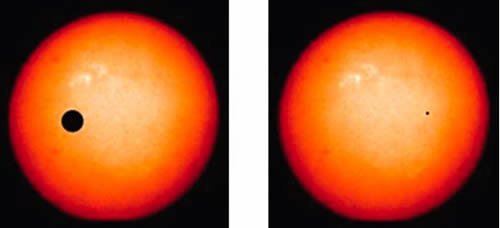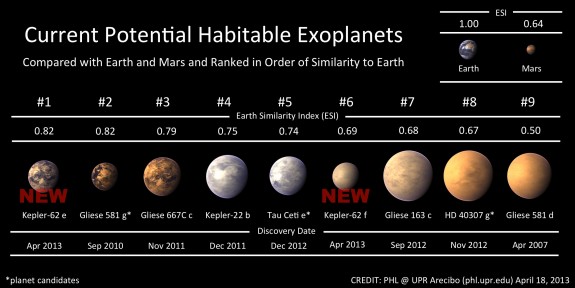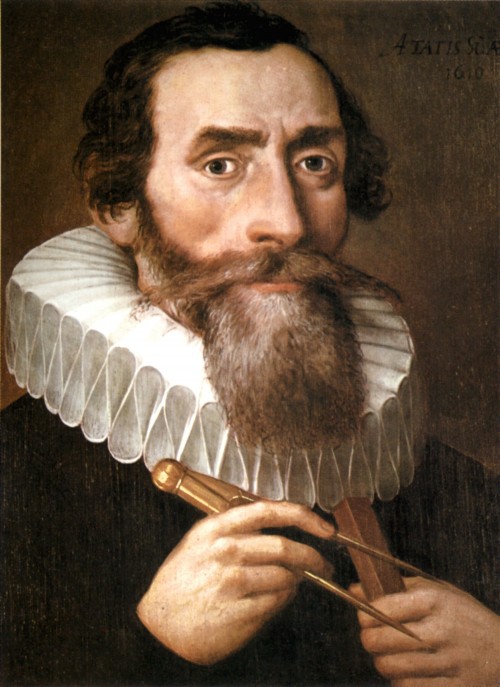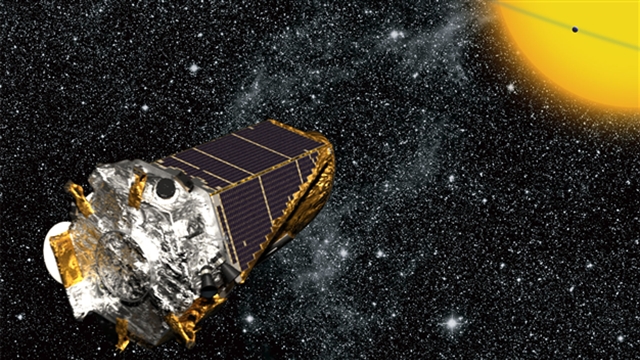There are currently two main ways to detect planets around distant stars. Either we have to be lucky and be looking in a line that causes an exo-planet to pass between us and its own sun so we can measure the tiny little amount that planet causes its stars light to dim, called a transit, or we are looking at the “down” on the orbits of the planets around that star and we see that star wobble just a little from the orbital tug of the local planets.
The Kepler Space Telescope looks for those transits and has made several new discoveries.

From USA Today
3 planets discovered with right size, location for life
Dan Vergano, USA TODAY
Astronomers have spotted more than 800 planets orbiting nearby stars in recent decades, but only a handful have been Earth-sized, “Goldilocks” worlds, not too hot and not too cold for water. Astronomers consider water an essential ingredient for the possibility of life on other planets.
The Kepler space telescope findings reported in the journal Science by a team led by William Borucki of NASA’s Ames Research Center in Moffett Field, Calif., add to that total. The report finds that the star, Kepler-62 has two planets, Kepler-62e and Kepler-62f, orbiting in ocean-friendly orbits around the star.
Another star spotted by Kepler, dubbed Kepler 69, appears to have a planet in the habitable zone. The planet, Kepler- 69c, is 70% larger than Earth and circles its star once every 242 days, an orbit resembling Venus in our solar system.
“Kepler is really delivering. It is frankly amazing that we live at a time when we can talk about Earth-like planets around other stars,” says MIT astronomer Sarah Seager, who was not on the discovery team. “The next stage is being able to really see what these planets are like.”
Kepler, which spots stars by seeing the dip in starlight they cause during passes in front of their stars, can give only size estimates of planets, not determine their composition, Seager says. Future planet-observing satellites, such as the planned Transiting Exoplanet Survey Satellite (TESS) announced this month by NASA for launch in 2017, should provide more information on such worlds. “What we are seeing with all these different orbits of these worlds is that planet formation is a pretty random process,” Seager says. “they certainly don’t all look like our solar system.”
Once, travel on planet Earth was by foot, then by domesticated animal, then by application of the wheel or construction of boats and even then it took weeks or years to travel significant distances. As transportation technology and infrastructure improved, the world was described as getting smaller. Today the possibility of a ninety minute trip to anywhere on Earth is within reach and we as some debate whether extraterrestrial life has come a visiting, others are looking outward to see where it might be coming from. I cannot decide of we are making the universe bigger or smaller, but hopefully we are finding it more full of life.

For more info on the Kepler Space Telescope, visit Kepler.Nasa
[email protected]
And please visit Lindsay, say Hi and Like us on our FaceBook page where you will find more content and commentary.

Johanesse Kepler was a German mathematician, astronomer and astrologer. A key figure in the 17th century scientific revolution, he is best known for his eponymous laws of planetary motion, codified by later astronomers, based on his works Astronomia nova, Harmonices Mundi, and Epitome of Copernican Astronomy. These works also provided one of the foundations for Isaac Newton’s theory of universal gravitation. He spent decades trying to describe the orbits of the planets known in the 17th century as some divine proportion based upon the proportions of the perfect solids, the tetrahedron, octohedron, cube, icosahedron, and dodecahedron. He could never resolve the imperfections in the orbits to his theory, unwilling to accept them as computational errors as other did. Finally he realized where the errors were coming from and was the first to describe planetary orbits as elliptical rather than circular. The old TV series COSMOS does a terrific episode on him and is available on Netflix.





